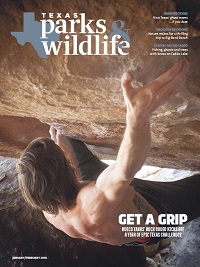
Rock Climbing
By Russell Roe
Rock climbing provides an interaction with nature in one of the most thrilling and intimate ways. A rock climber scales a cliff face, searching for footholds and handholds along the way, in an attempt to reach the top without falling. The sport combines fitness and adventure, mental challenges and physical exertion in a way that exercises mind, body and spirit. A sense of danger raises the stakes. A successful ascent feels like a well-earned achievement.
Climbers use lots of gadgets and lots of strange terms. Climbing has a number of procedures involving knots, gear and ropes to make it safe and accessible. It’s calculated fun. The best way to learn how to climb is to take a class or find a friend who climbs. Safety is paramount, and a good teacher can be key.
One good, low-commitment way to get started is to visit a climbing gym, where you can try out climbing without having to invest in a bunch of gear. Gyms are a convenient gateway to climbing, but the real adventures await outdoors.
I’ve been climbing in Texas for 30 years and have hit just about every crag across the state. I enjoy the physical challenges, the problem solving, the camaraderie, the adventures. Best of all, climbing has given me many glorious days in the outdoors with good friends.
Texas isn’t as rich in climbing as some other Western states, but there’s enough here to keep you busy. One of our state parks, Hueco Tanks, is internationally renowned in climbing circles.
“How’d you get the rope up there?” Generally, a lead climber will tie into the rope and start climbing the cliff while being belayed by a partner who helps control the rope. The leader clips the rope into protection points along the way — either fixed bolts or removable gear the leader places — and establishes an anchor point at the top of the climb. The leader then is lowered to the ground or belays his or her partner up.

Types of Climbing
- Indoor: Climbing in a gym on artificial holds.
- Bouldering: Climbing boulders and short cliffs without a rope.
- Sport: Climbing cliffs that have fixed bolts for protection along the route.
- Trad (or “traditional”): Climbing cliffs in which the lead climber places removable protection in cracks or crevices along the route.
Gear Up
- Climbing shoes: Special rubber on the bottom helps climbers avoid slipping.
- Harness: Holds gear and is used to connect the climber to the rope.
- Rope: Protects the climber in the event of a fall.
- Quickdraws: Gear with metal carabiners on each end to connect the rope to a protection point.
- Belay device: Piece of gear that provides friction to control the rope when belaying.
- Chalk bag: Holds chalk used to keep a climber’s hands dry.
- Helmet: Protects a climber’s head during a fall and in case of falling rocks or debris.
Where to Go
- Franklin Mountains State Park
- Hueco Tanks State Park and Historic Site
- Enchanted Rock State Natural Area
- Lake Mineral Wells State Park
- Reimers Ranch Park (Travis County)
» Like this story? If you enjoy reading articles like this, subscribe to Texas Parks & Wildlife magazine.
Related stories

